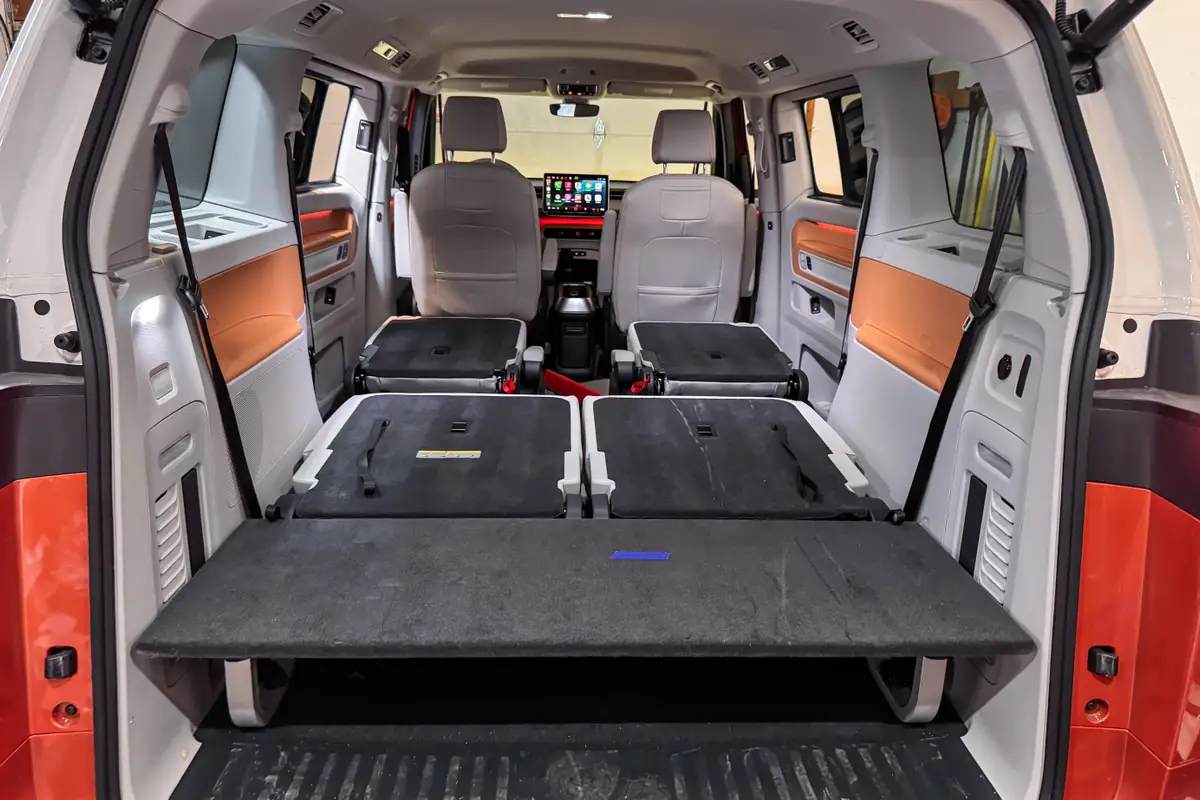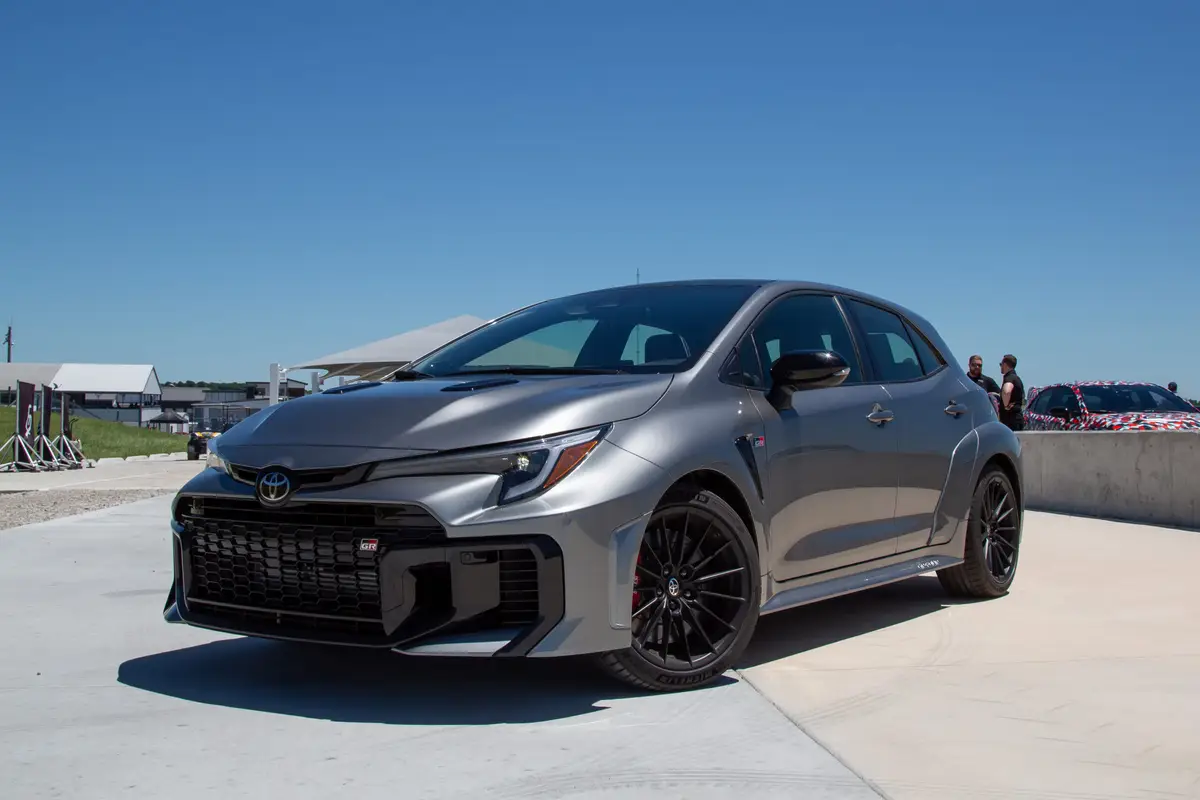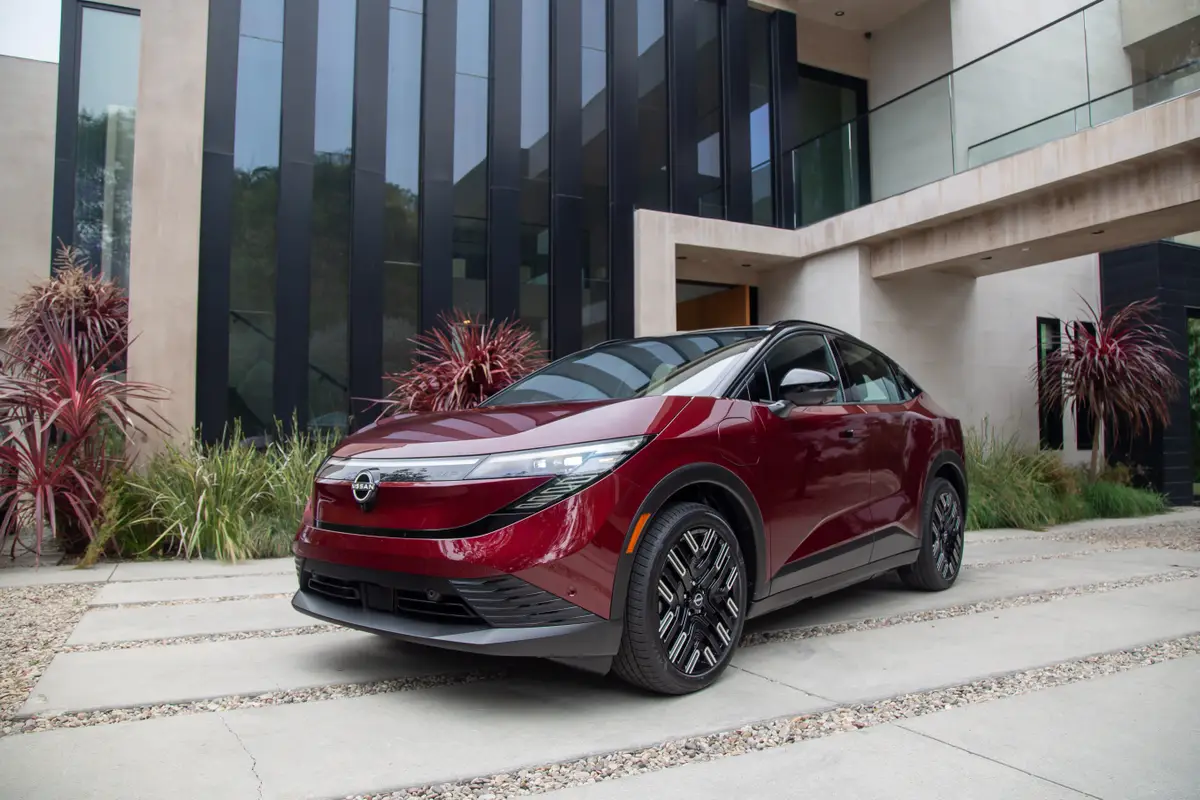2016 Nissan Frontier: Car Seat Check

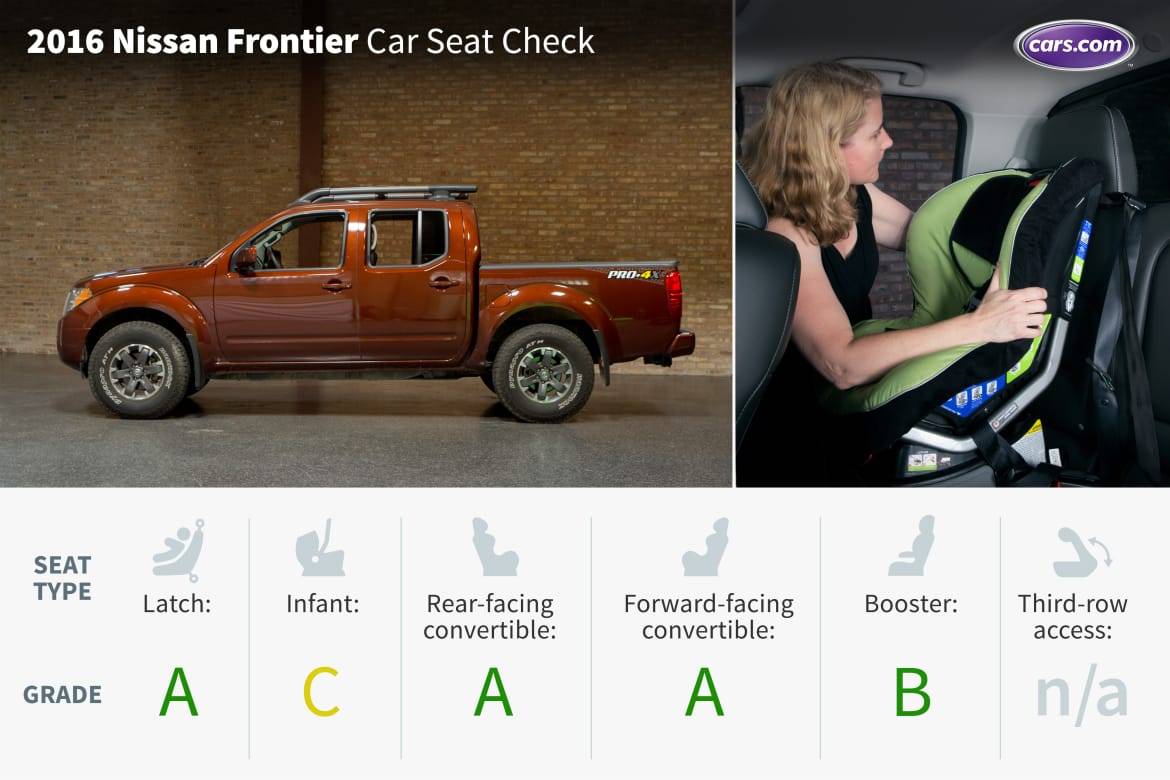
CARS.COM — Nissan’s midsize pickup truck, the Frontier, has changed little for the 2016 model year. We tested the car-seat capabilities of the Pro-4X trim, and the crew cab can accommodate either a workforce or a family of five thanks to its ability to fit three child-safety seats across. Our Car Seat Check of the Frontier wasn’t without its rocky patches, however.
How many car seats fit in the second row? Three
What We Like
- The two sets of Latch anchors in the outboard seats are easy to access just behind vertical slits in the leather upholstery.
- Our rear-facing convertible seat installed easily, and we moved the front passenger seat less than an inch forward to fit it.
- Being able to fit three car seats across never gets old.
What We Don’t
- The three top tether anchors are positioned behind the rear seatbacks and access is tricky. The user must fold the seatback forward, attach the tether connector and then begin to tighten the strap — an arduous process that complicated the installation of our forward-facing convertible seat.
- We had to move the front passenger seat forward more than an inch to accommodate our infant safety seat, forcing the 5-foot-8-inch-tall test passenger’s knees into the glove box.
- Although the booster seat sat well on the Frontier’s flat bench seats, the seat belt buckles are on floppy bases, which could make it difficult for children to strap themselves in.
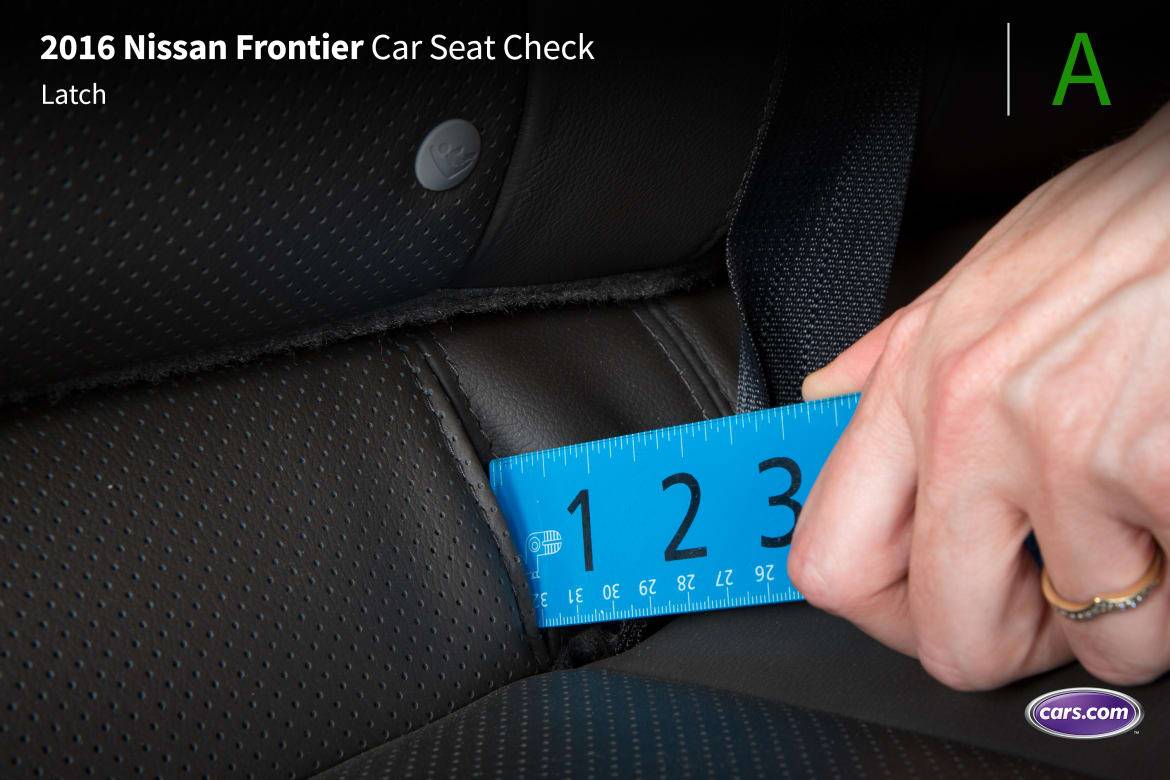
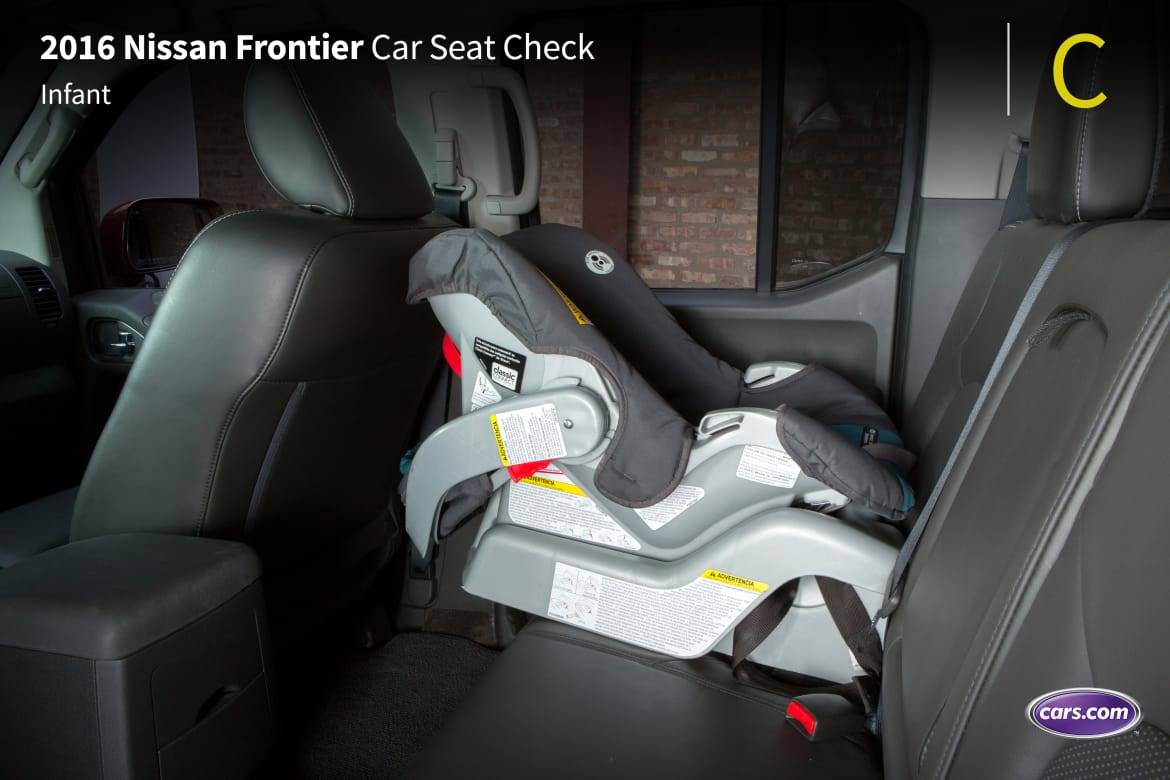
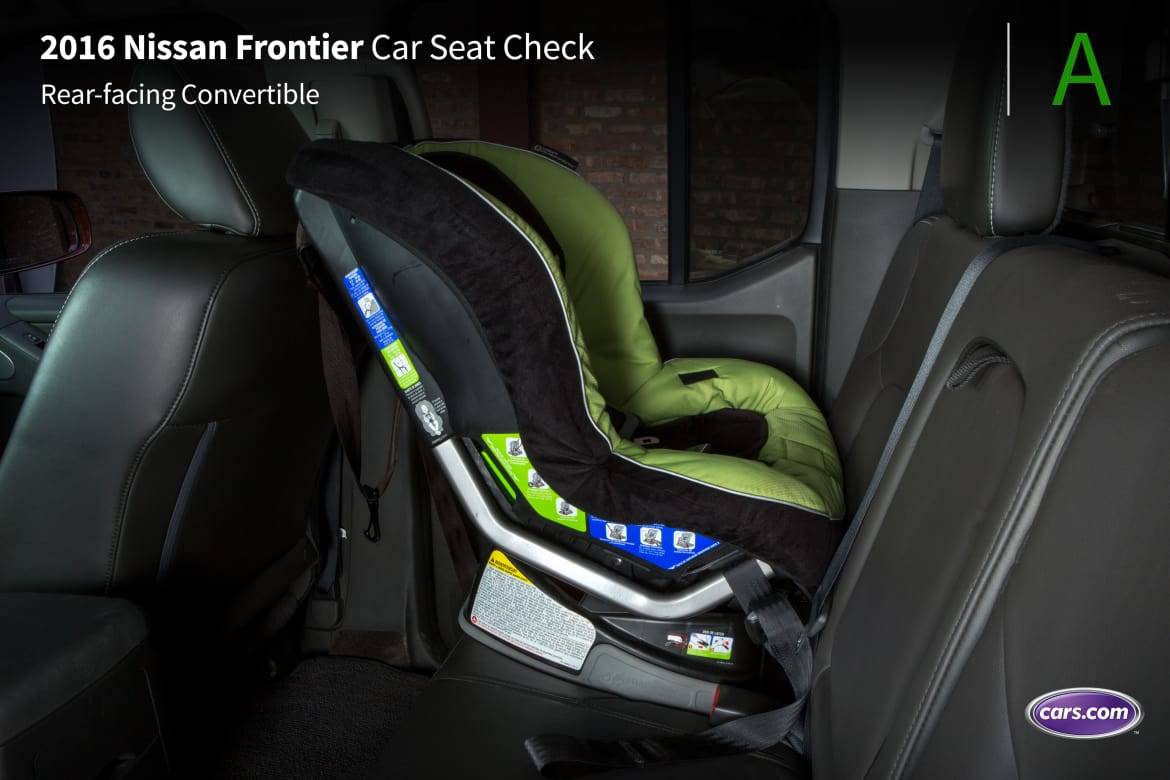
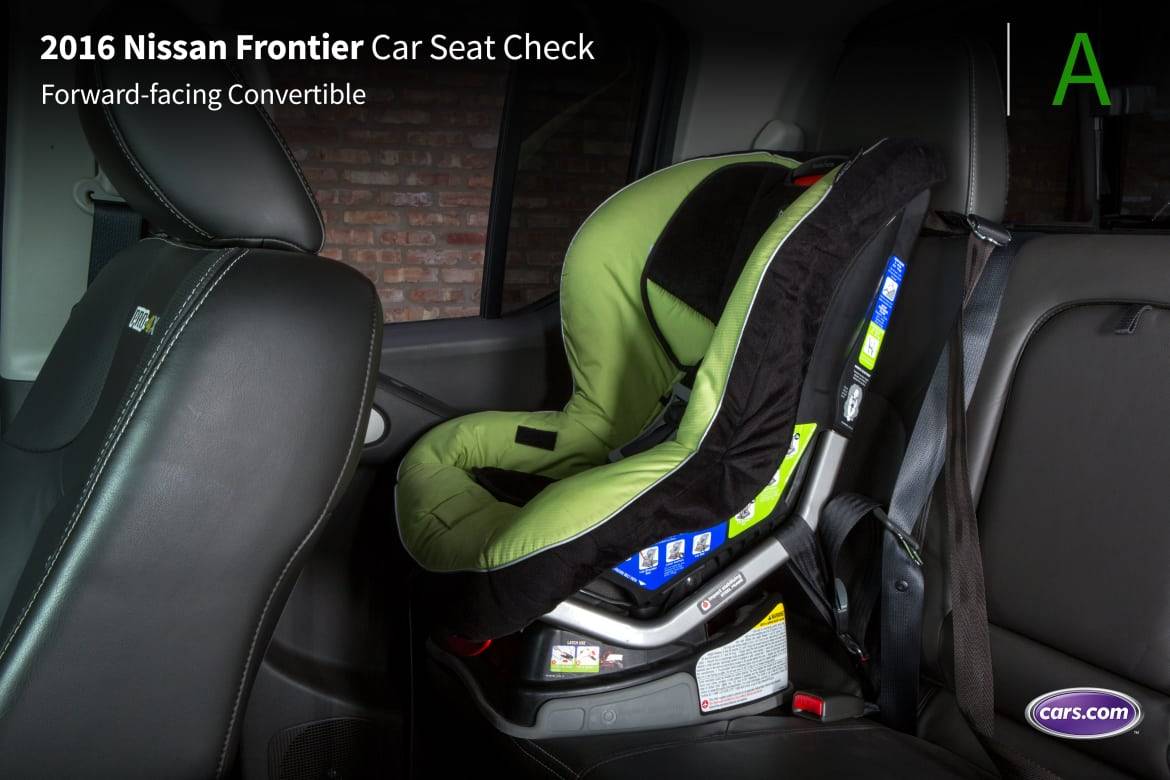
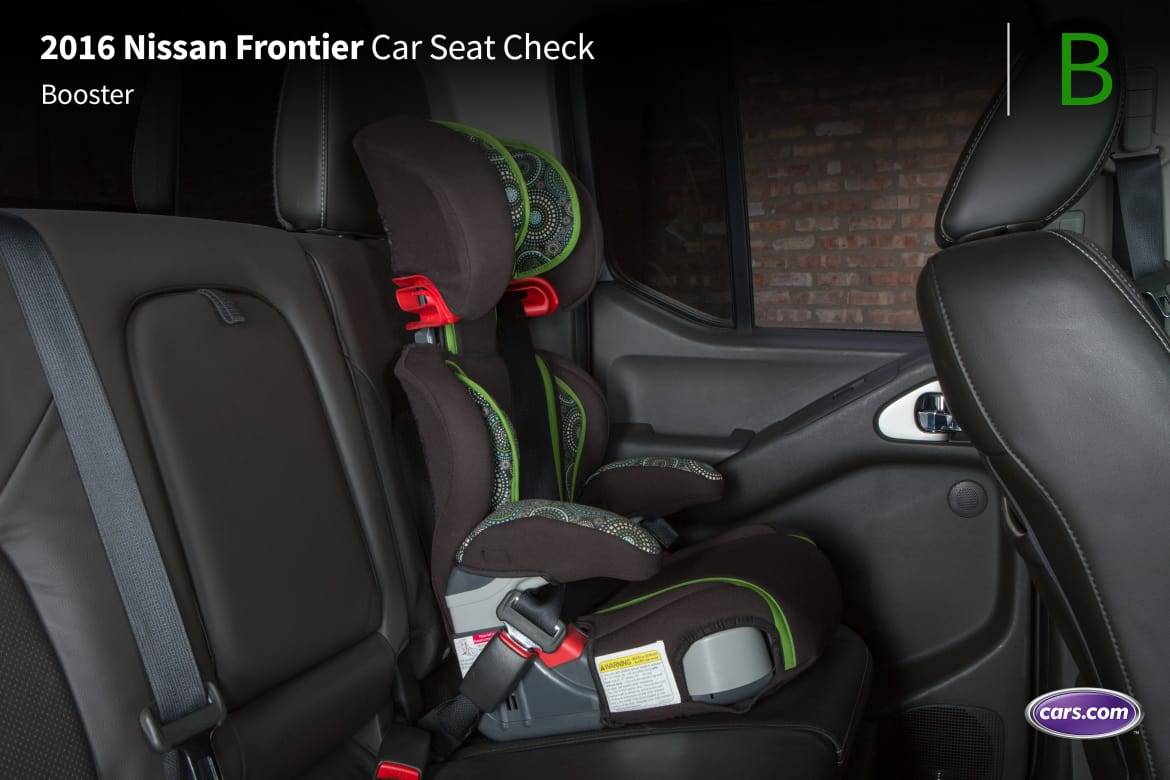
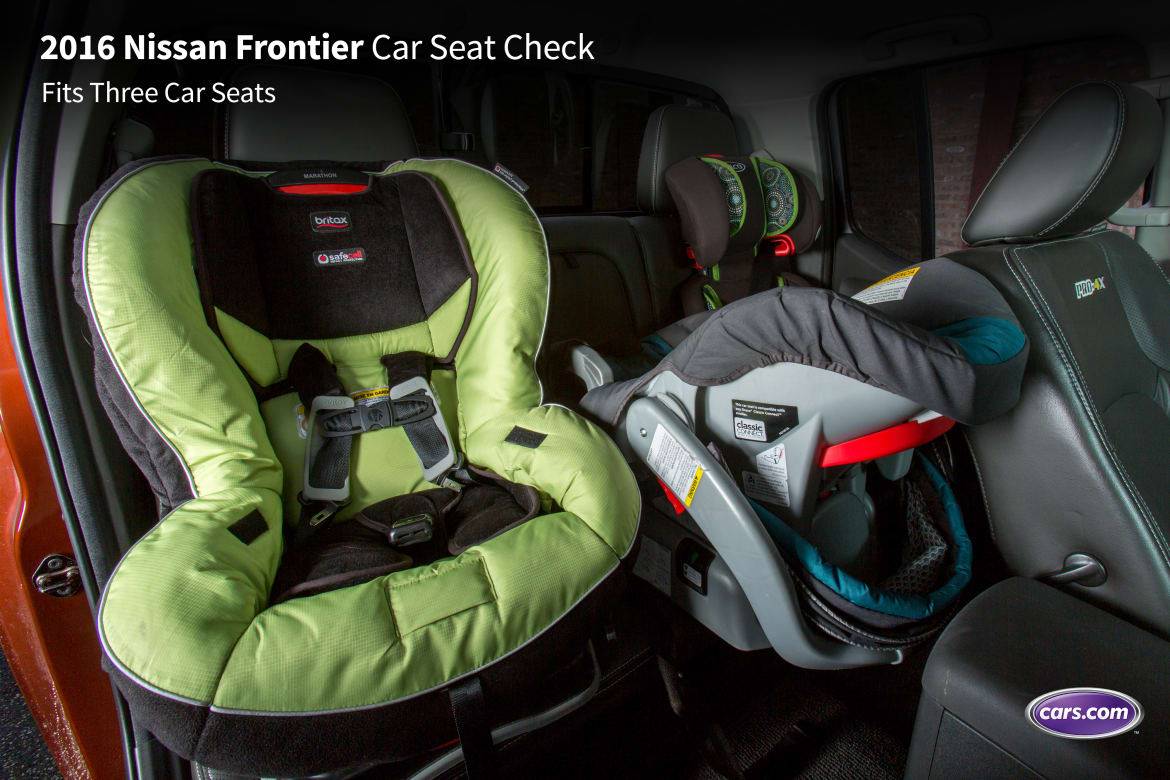






Grading Scale
A: Plenty of room for the car seat and the child; doesn’t impact driver or front-passenger legroom. Easy to find and connect to Latch and tether anchors. No fit issues involving head restraint or seat contouring. Easy access to the third row.
B: Plenty of room. One fit or connection issue. Some problems accessing third row when available.
C: Marginal room. Two fit or connection issues. Difficult to access third row when available.
D: Insufficient room. Two or more fit or connection issues.
F: Does not fit or is unsafe.
About Cars.com’s Car Seat Checks
Editors Jennifer Geiger and Jennifer Newman are certified child-safety seat installation technicians; editor Matt Schmitz is working toward recertification.
For the Car Seat Check, we use a Graco SnugRide Classic Connect 30 infant-safety seat, a Britax Marathon convertible seat and Graco TurboBooster seat. The front seats are adjusted for a 6-foot driver and a shorter passenger. The three child seats are installed in the second row. The booster seat sits behind the driver’s seat, and the infant and convertible seats are installed behind the front passenger seat.
We also install the forward-facing convertible in the second row’s middle seat with the booster and infant seat in the outboard seats to see if three car seats will fit; a child sitting in the booster seat must be able to reach the seat belt buckle. If there’s a third row, we install the booster seat and a forward-facing convertible. To learn more about how we conduct our Car Seat Checks, go here.
Parents should also remember that they can use the Latch system or a seat belt to install a car seat, and that Latch anchors have a weight limit of 65 pounds, including the weight of the child and the weight of the seat itself.

Former Assistant Managing Editor-News Matt Schmitz is a veteran Chicago journalist indulging his curiosity for all things auto while helping to inform car shoppers.
Featured stories
